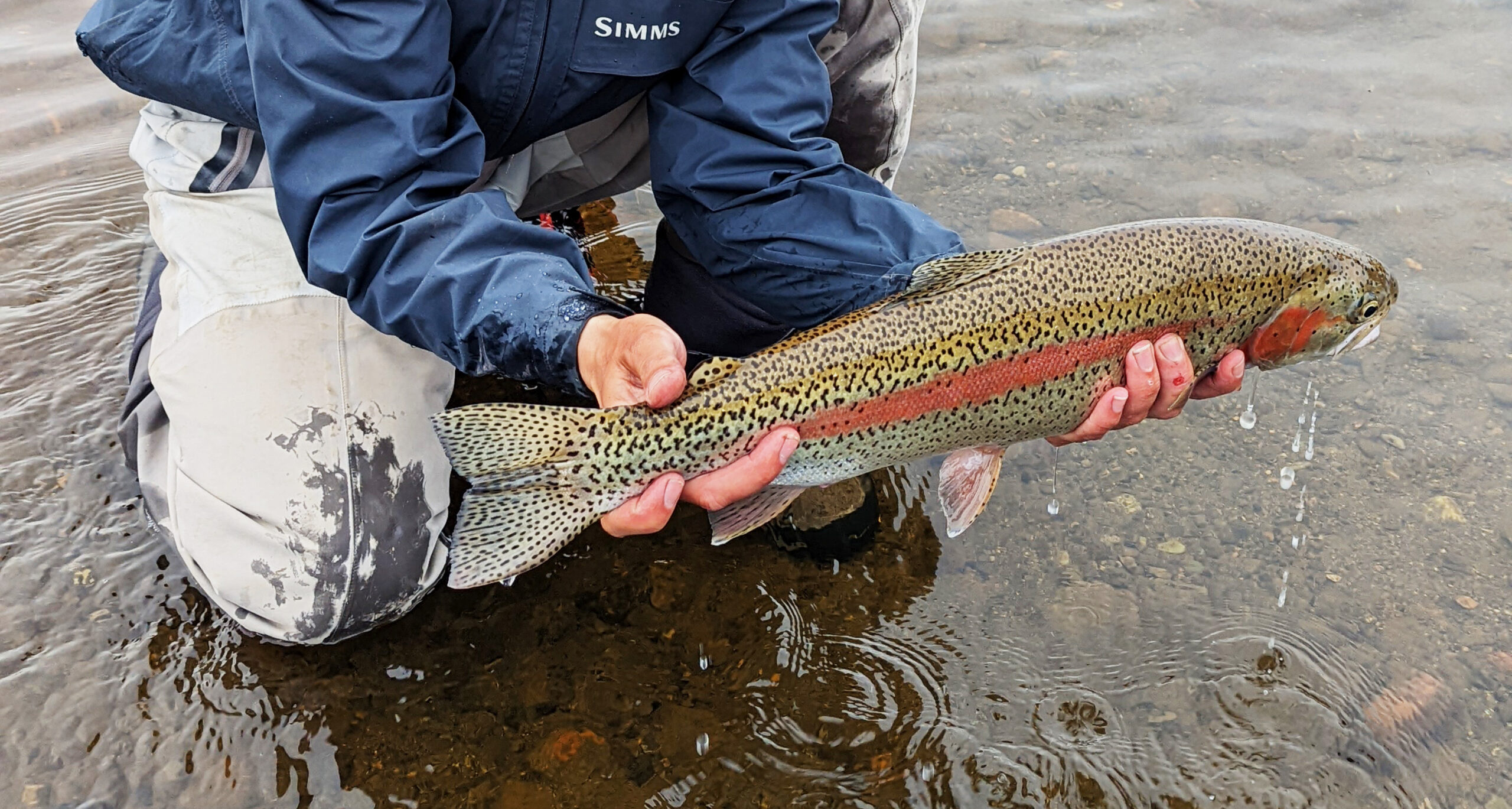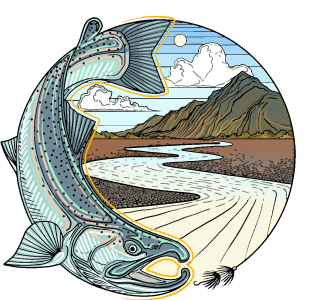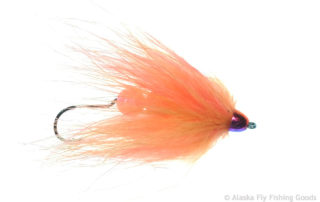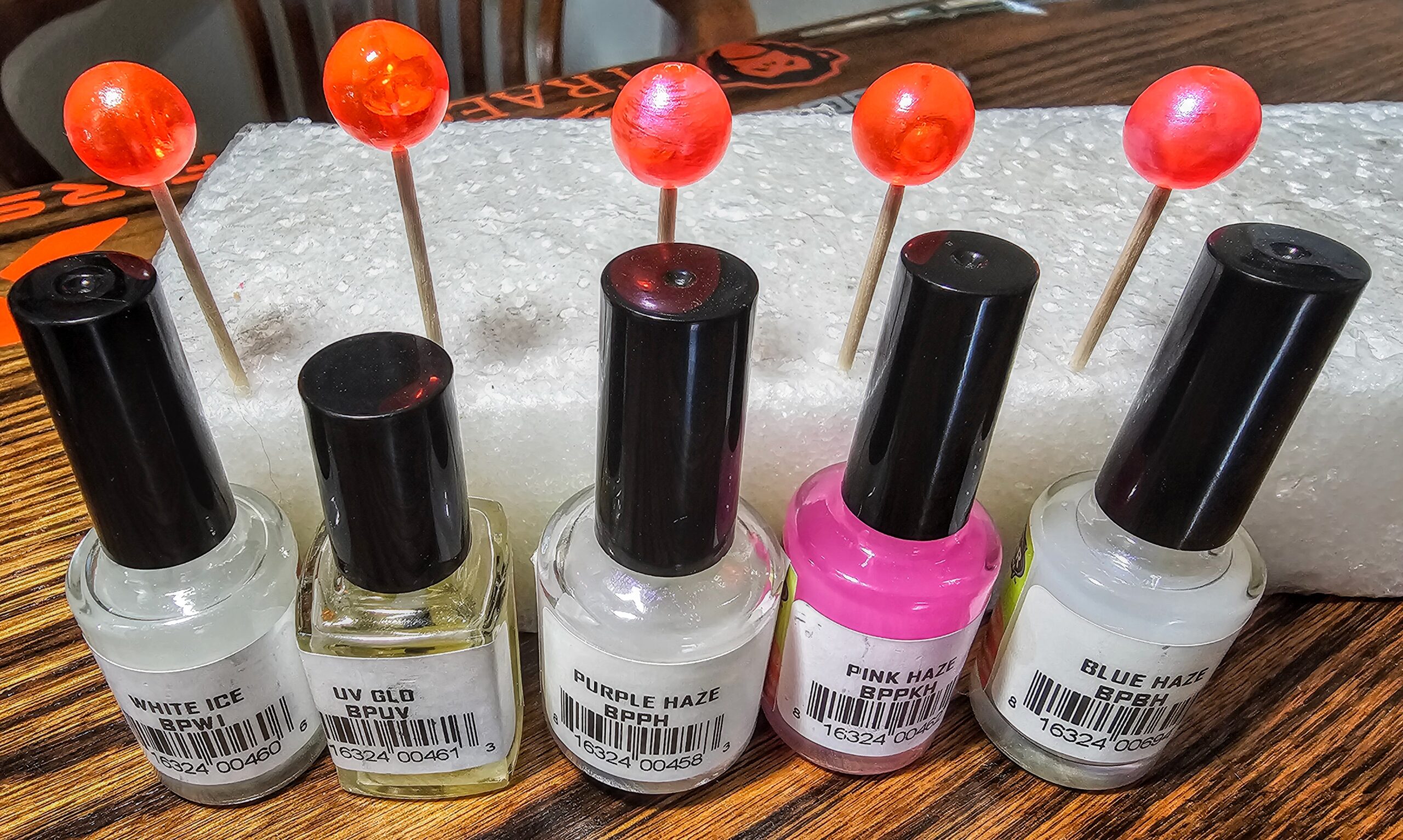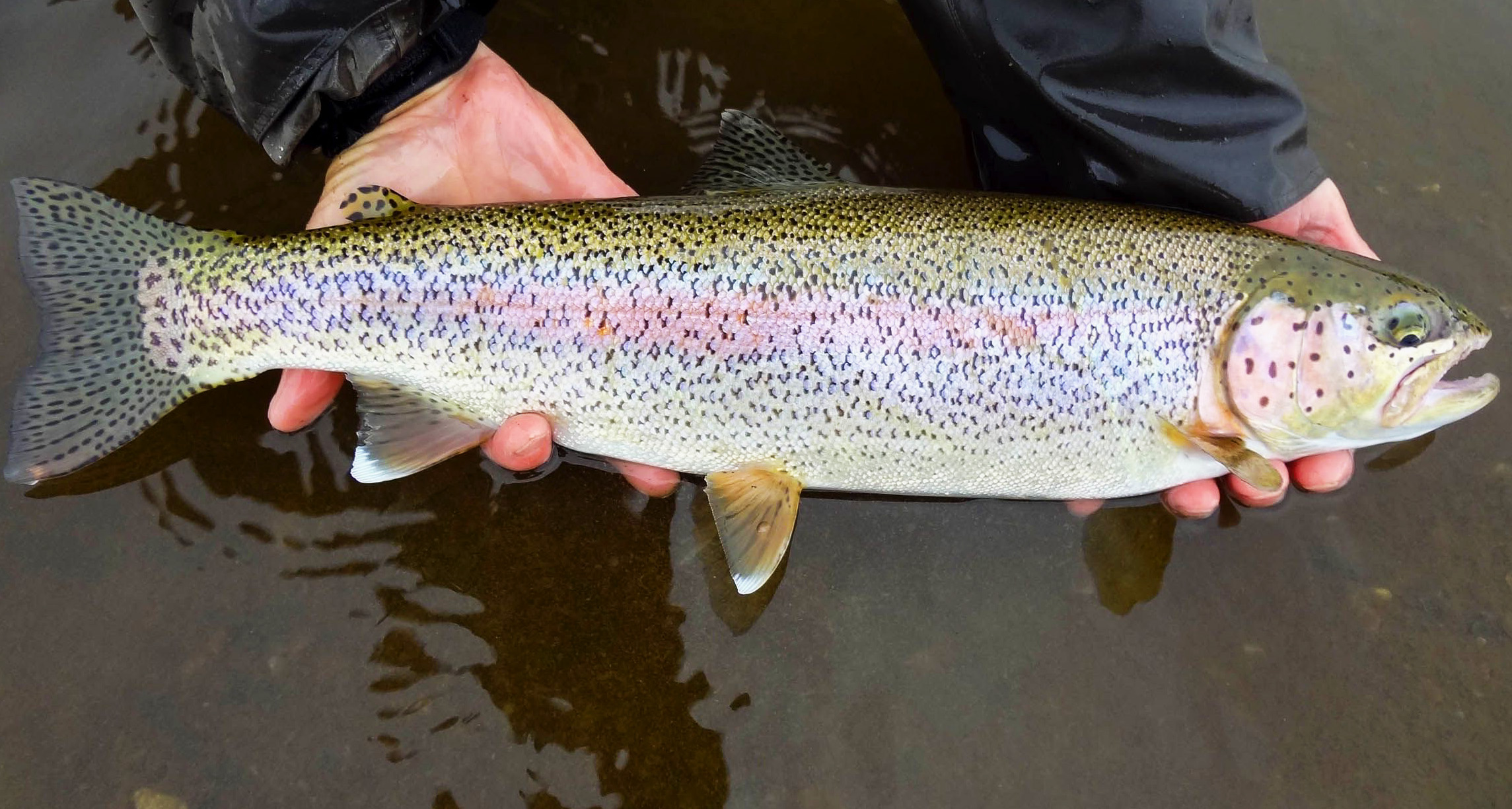
By Cory Hansen
Alaska has some of the world's best fishing, this is not anything new. With countless river systems that produce fish it can be overwhelming to say the least. There simply isn't enough time in one lifetime to see them all. Fortunately, in many of the river systems in the state, flies and techniques are very similar. Our state hosts an absolutely stellar run of all five species of Pacific salmon. While salmon are the target for many anglers, you are reading this today because like me, you are drawn to the stunning beauty of Alaska's rainbow trout. Now I don't want to bash salmon, they fight hard and taste delicious. Grayling readily take dry fly offerings, and char (one of my favorite fish) chow on smolt and egg patterns like there is no tomorrow. All of these fish are a joy to catch. That being said, rainbows feed voraciously on anything and everything, and they can be caught successfully with more techniques than any of the aforementioned fish. We are going to be breaking down some of our favorite patterns for targeting big rainbows (on flies) during the fall season, which in Alaska is mid-August through the end of September. Today we will be talking about 5 categories of flies that should be in every fall trout angler's box.
DOLLY LLAMA
No top fly article worth its salt would be complete without the Dolly Llama. This fly simply does it all, and it does it all with beauty and grace, at least once it's in the water! Rainbows are predatory fish, and they don't discriminate a whole lot on what type of food they are eating on a given day. Summers in Alaska are short, and these fish need to take advantage of every meal that comes their way during the months that they are not trapped under lake ice. Sculpins, smaller fish, and lampreys are all on the menu and the Dolly Llama sort of looks like all of them. Black/white, olive/white, purple/white, black/olive are my favorite colors during the fall when you are targeting rainbows that are actively hunting. In the lower stretches of river where deep pools full of wood are the norm use all white, flesh/cream, or ginger/salmon pink. These rainbows are lurking in the shadows pulling bits of salmon carcass off of submerged wood. The Egg Dolly Llama can also be absolutely deadly. Fish this version mid river in places where there are spawning salmon, but a plain bead is producing too many char (yes, that is a thing that happens). The best Egg Dolly Llama colors are flesh/cream, black/white, all white, and purple/white.
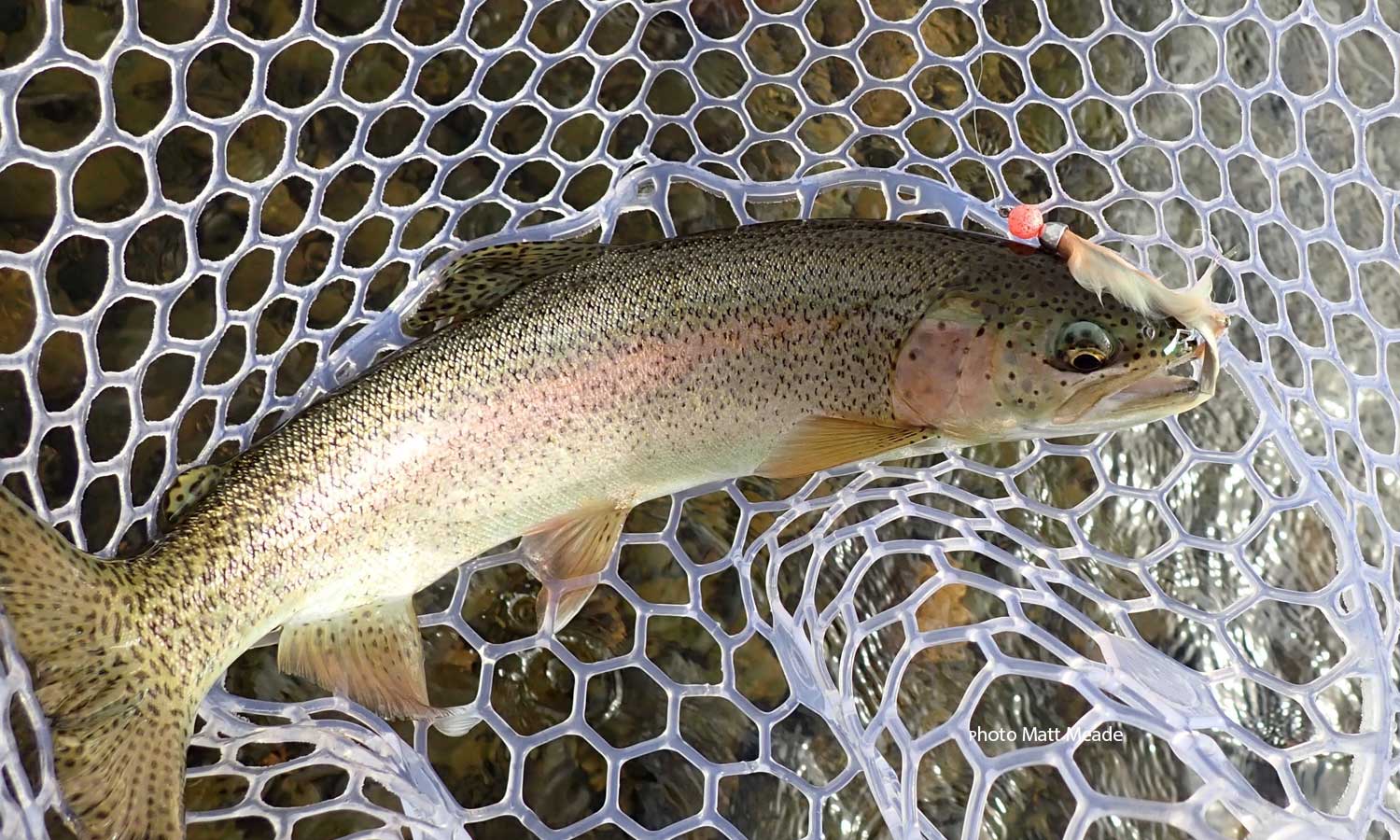
STS LEECH
A newer pattern than the good old Llama, but quickly becoming one of my favorites for rainbows. This single rabbit strip fly has a palmered marabou collar and a dubbed butt and head to really make it pop! Add in some tungsten eyes and this fly sinks like a boss, and it casts a little easier than a Llama, too. In early fall stick to more of the pre-flesh colors if you intend on swinging them. The midnight crusher, midnight madness, and midnight bliss are great lamprey imitations. Passion pink is a killer color especially if you don't mind tying into a large coho on occasion. For the lower stretches of river when the pools get deep, and you can see a summers worth of dead fish flagging in the current, go with either creamsicle or fleshy. This fly is best fished actively, the tungsten eyes are begging to get hung up in wood and for anglers not paying attention it will cost you $5 in a hurry!
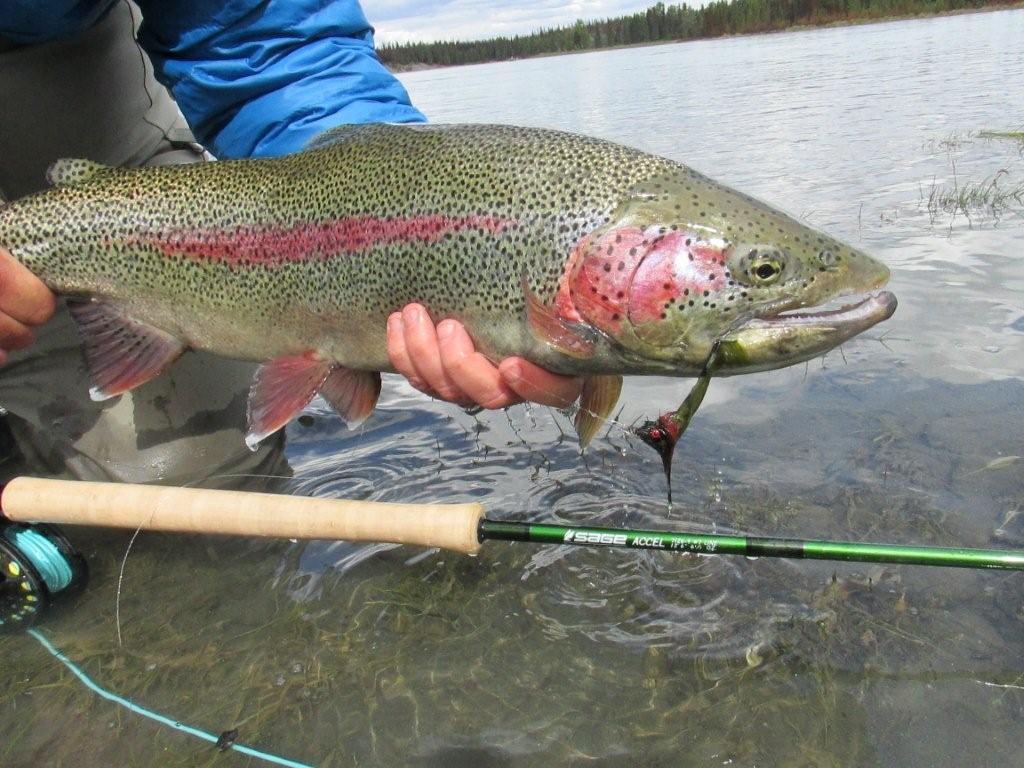
MICE
It's well known that mousing is the best early in the summer. Mid-June until Mid-July is generally looked at as the time for mousing, before there is an abundance of food in the river. Why then would rainbows just turn off in favor of an endless buffet of salmon? They don't, and that my friends is a fact. Sure, there are potentially more effective ways to catch Walter, but if my clients want to target rainbows in the fall and avoid the hordes of char and salmon, we do it using various terrestrial rodents. Voles to be exact. Just because the salmon show up doesn't mean these little critters go away. In fact, during big rains they often get swept into the river via small run off sloughs in the tundra. Pro Tip: Fishing mice when the water is high and off color can brighten up a soggy day. I tend to steer folks to the foam/rabbit or foam/deer hair variety of fly. They cast well and do not require flotant. My top 5 mouse flies are: Mini/Mr. Hankey, Baby/Pip Squeak Mouse, Stinger Mouse, Morrish/2.0, and Mickey Mouse. Ok, maybe that's more than five, but in some watersheds size matters. Bob Gnarly REST IN PEACE
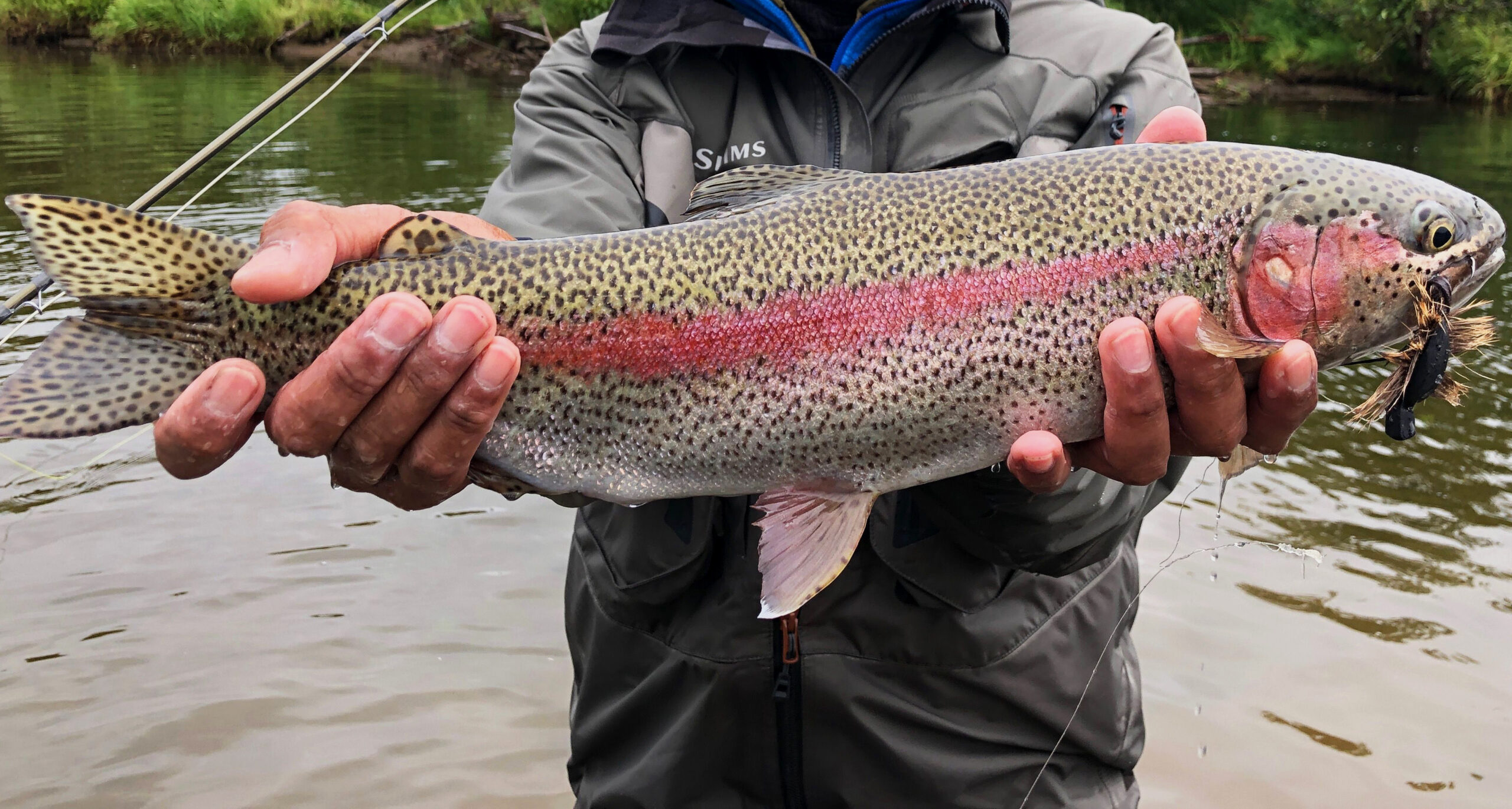
UV POLAR STARLITE LEECH
It may be a mouthful to say, but it's also a mouthful for a rainbow trout. This fly has a lot going for it and it is the first pattern that is getting into the realm of flesh flies. The polar flesh variant is specifically very enticing to big bows. The UV coating of the body material paired with a flowy craft fur wing makes this pattern a standout when it comes to a single hook fly. In a world of articulated goodness, the UV Polar Starlite holds its own. If this fly has a downfall, it would be that cohos can't resist it! There is one trick that helps target rainbows. Slide a bead onto the leader before tying your fly on. This trick helps keeps salmon away long enough for the trout you really want to catch to decide they are hungry. Fish the pink/red or pink/black color schemes if you are searching a lot of water. Once you are targeting the deep pools full of carcasses UV Polar Flesh can't be beat.
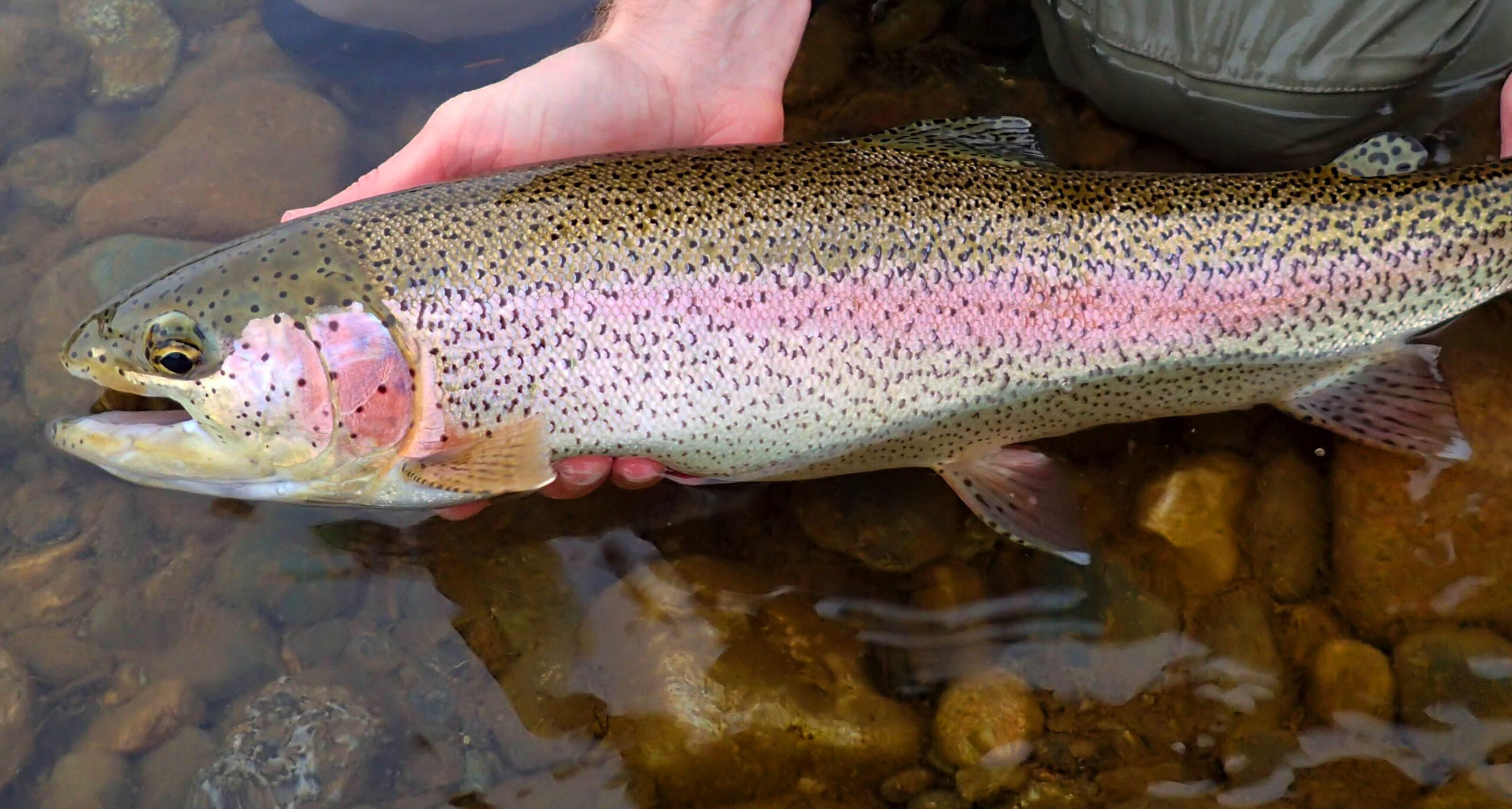
SMALL FLESH
Steak and Eggs, the old school Alaska trick of putting a free sliding bead in front of a small flesh fly is still relevant and very effective. Smaller flesh flies lend themselves quite well to this technique. Battle Creeks and Battle Bunnies are two of my favorites. You don't absolutely have to slide on a bead though, as these flies can fish as effectively on their own. Try dead drifting this set up in the deep pools and swing them in the shallow runs and tail outs. Brighter flesh colors work well early on and as you get later into fall switch to the cream/white color schemes. Likewise, if you are going the steak and eggs route use a fresher egg earlier and more dead colors as the season progresses. Reds are better colors behind sockeye and kings, oranges for behind chums and pinks.
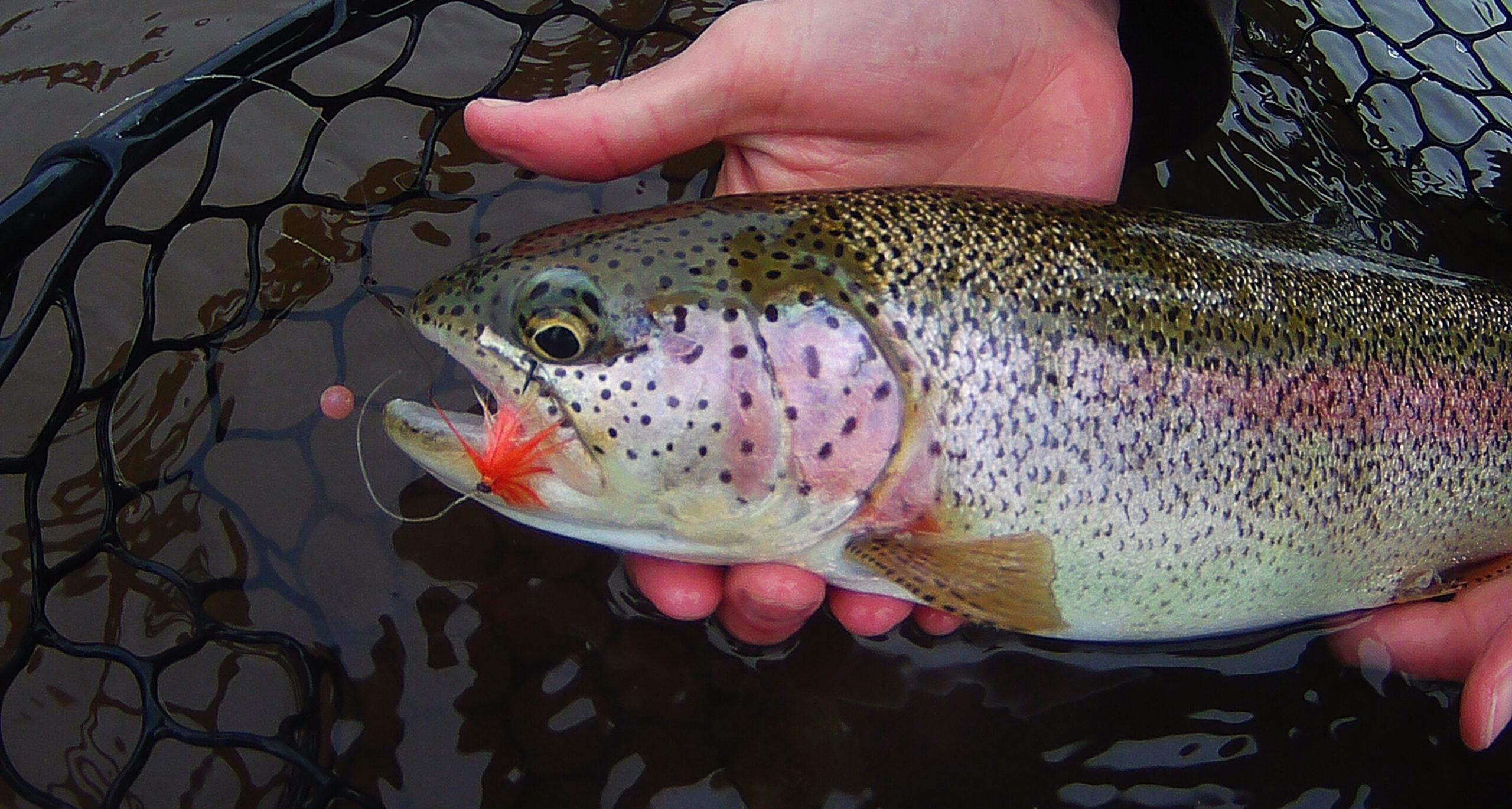
LARGE FLESH
Late season in Alaska is the time to find the biggest of the big rainbows. I mean big, 30+ inches and over 15lbs. The weather is tough during September & October but as they say, pay to play. These monsters of Western Alaska have had all season to get fat and during this time of year a season's worth of biomass is literally rotting to pieces on every chunk of wood in the river. Dead drifting massive pieces of flesh can be absolutely deadly as well as swinging in front of wood piles. It is important to note that this is a good way to lose a lot of flies. Not only are you trying to put these flies as close into logjams as possible, but the fish you end up connecting with have some shoulders! Our favorite large flesh flies are Captain Kirk, AK Bounty Hunter, Barely Legal, Double Eggabou and Yardstick Flesh.
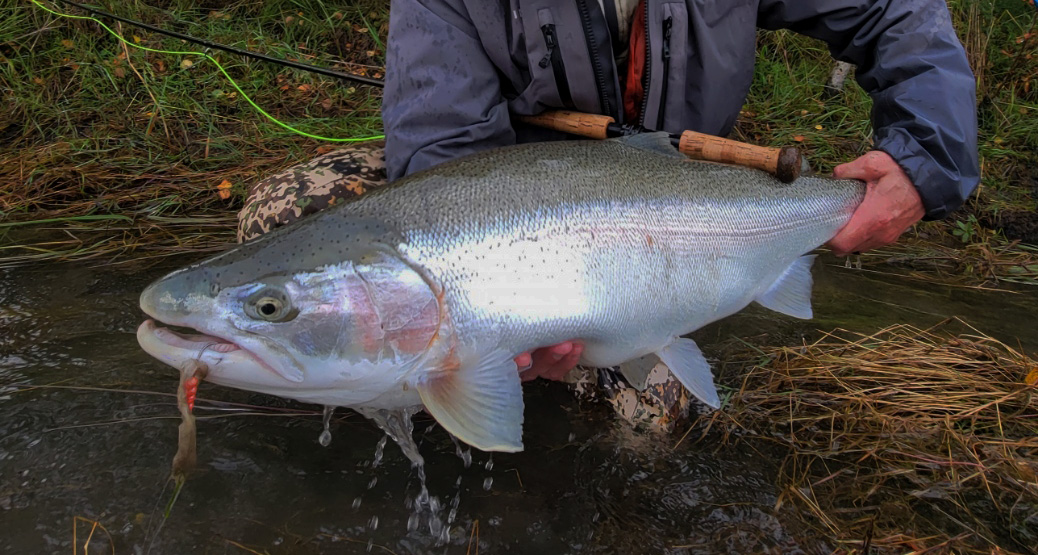
Summary
Now you are armed with the knowledge to help you get into some of the best fish that fall in Alaska has to offer. The next step is to get out there! Whether in the Mat-Su Valley, the Kenai Peninsula, Bristol Bay, or various rivers in Western Alaska, there are bountiful rainbows to be caught. Give us a call (907-586-1550) or shoot us an email (info@alaskaflyfishinggoods.com) and we can help get you geared up and pointed in the right direction. Enjoy the last bit of fishing for the season, it's always the best before we head back into winter!
